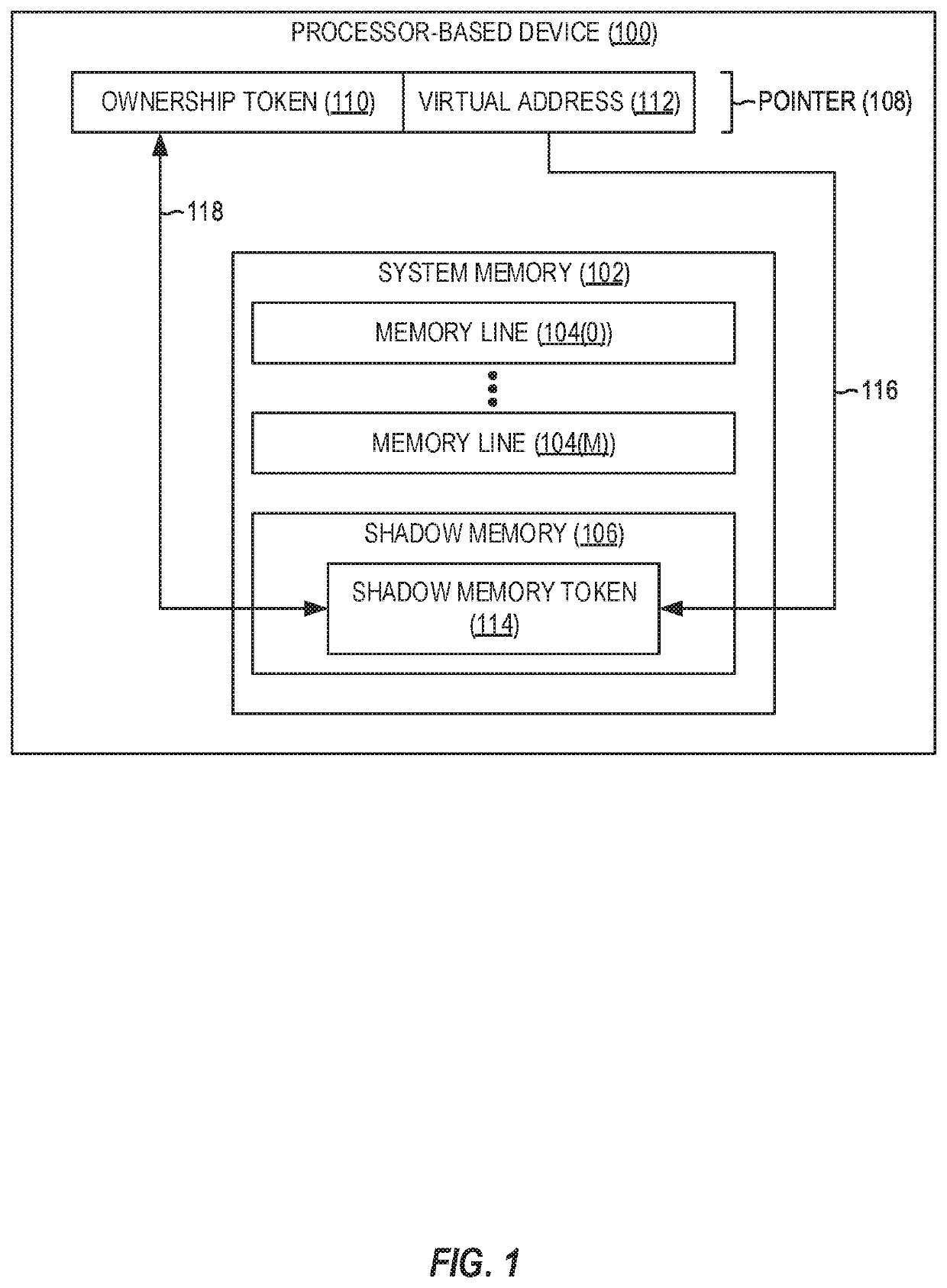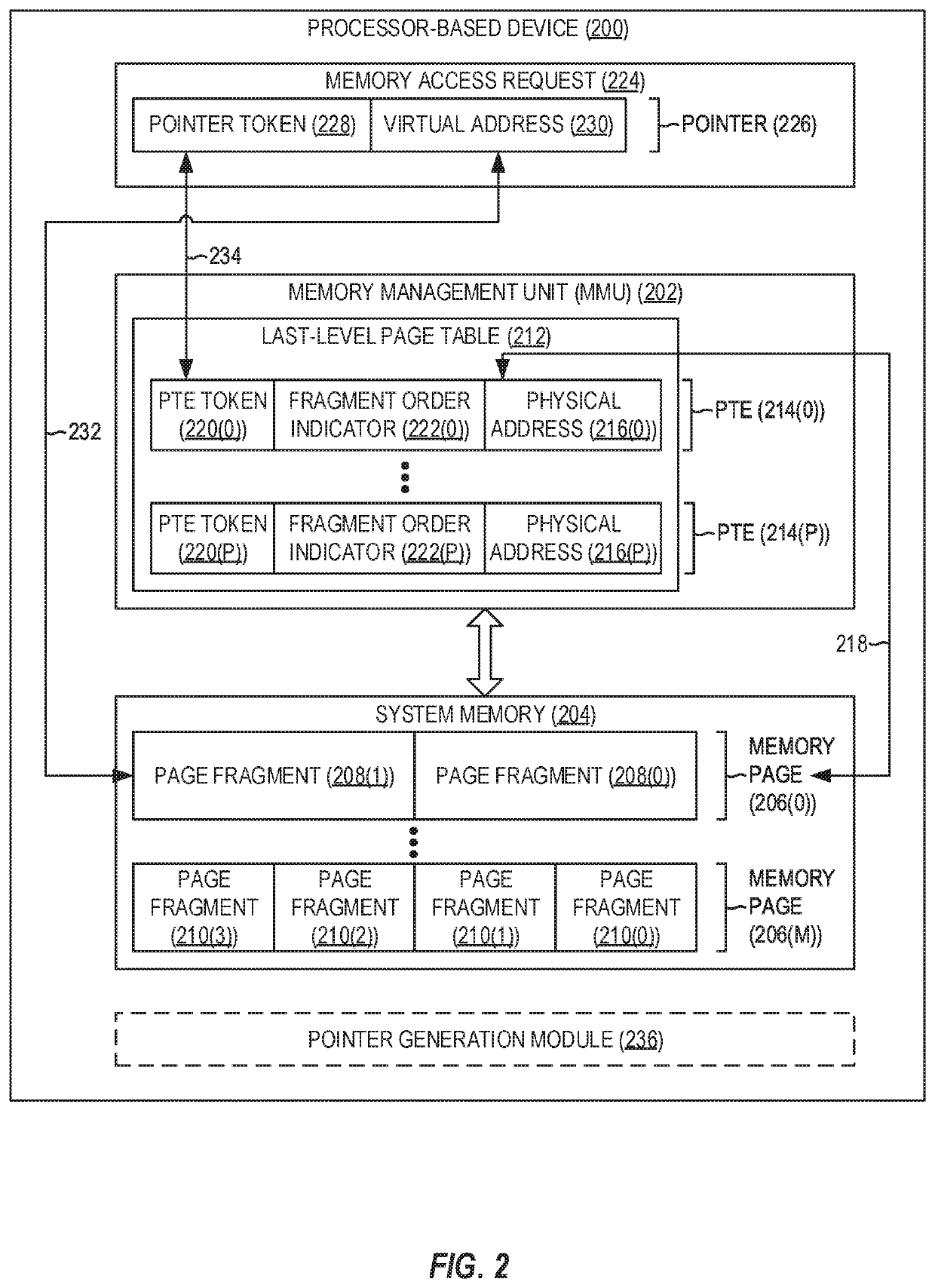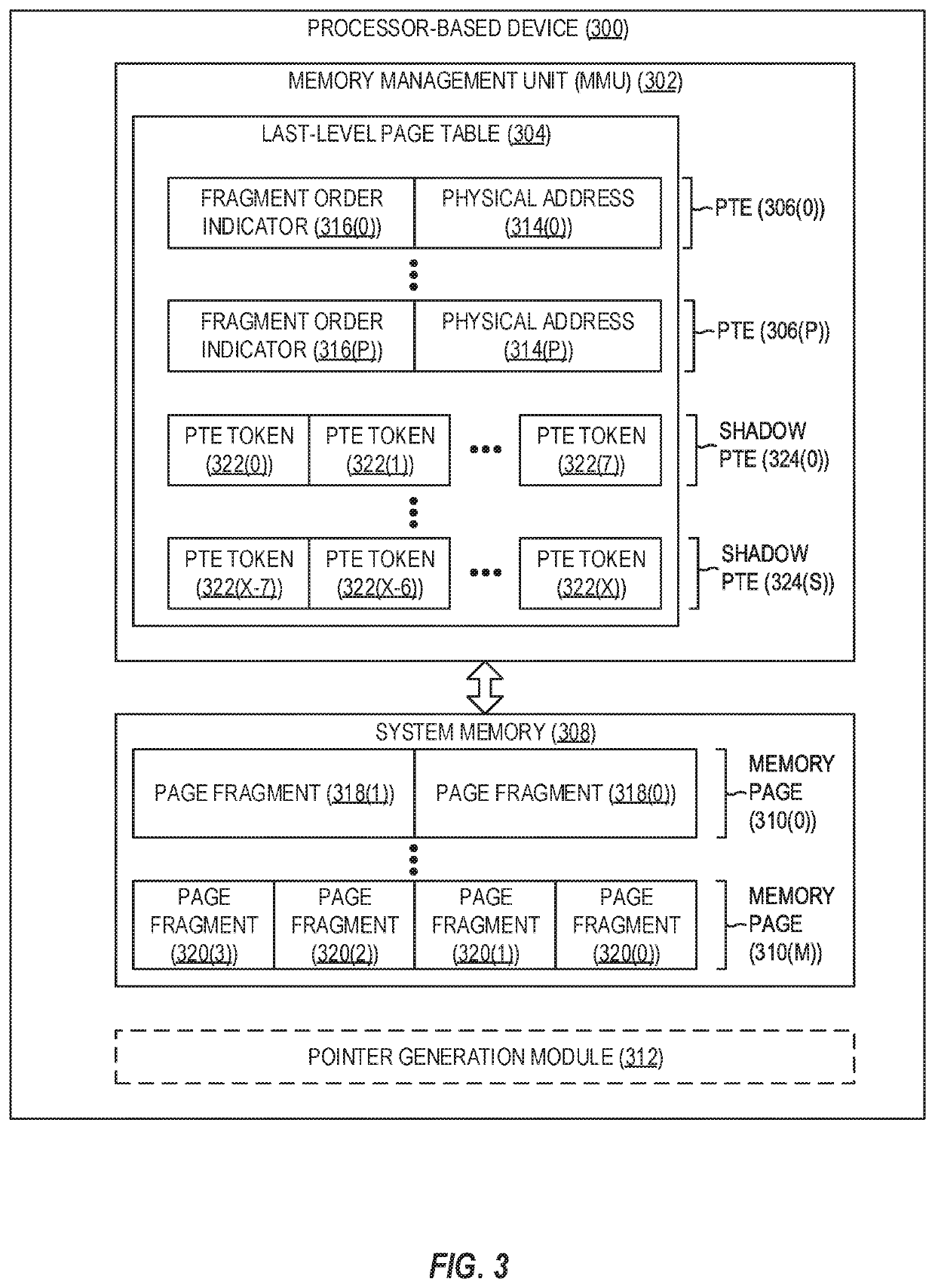MMU assisted address sanitizer
a technology of address sanitizer and mmu, which is applied in the direction of memory adressing/allocation/relocation, unauthorized memory use protection, instruments, etc., can solve the problems of difficult to identify and locate, difficult to isolate issues in software for processor-based devices using languages such as c or c++, and the possibility of security vulnerabilities, so as to increase the reliability of software without incurring performance and memory overhead.
- Summary
- Abstract
- Description
- Claims
- Application Information
AI Technical Summary
Benefits of technology
Problems solved by technology
Method used
Image
Examples
Embodiment Construction
[0016]With reference now to the drawing figures, several exemplary aspects of the present disclosure are described. The word “exemplary” is used herein to mean “serving as an example, instance, or illustration.” Any aspect described herein as “exemplary” is not necessarily to be construed as preferred or advantageous over other aspects.
[0017]Aspects disclosed in the detailed description include providing memory management unit (MMU)-assisted address sanitizing in processor-based devices. In this regard, FIG. 2 illustrates an exemplary processor-based device 200 including an MMU 202 that is communicatively coupled to a system memory 204 (e.g., double data rate (DDR) synchronous dynamic random access memory (SDRAM) (DDR SDRAM)) comprising a plurality of memory pages 206(0)-206(M). It is to be understood that the processor-based device 200 may encompass any one of known digital logic elements, semiconductor circuits, processing cores, and / or memory structures, among other elements, or ...
PUM
 Login to View More
Login to View More Abstract
Description
Claims
Application Information
 Login to View More
Login to View More - R&D
- Intellectual Property
- Life Sciences
- Materials
- Tech Scout
- Unparalleled Data Quality
- Higher Quality Content
- 60% Fewer Hallucinations
Browse by: Latest US Patents, China's latest patents, Technical Efficacy Thesaurus, Application Domain, Technology Topic, Popular Technical Reports.
© 2025 PatSnap. All rights reserved.Legal|Privacy policy|Modern Slavery Act Transparency Statement|Sitemap|About US| Contact US: help@patsnap.com



